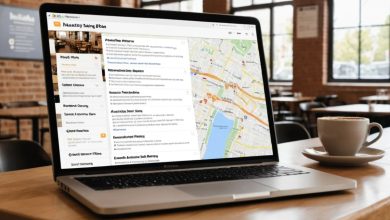Zero-Cost Networking Ideas When Budgets Are Tight
Networking can feel out of reach when budgets are squeezed, but building meaningful professional relationships doesn’t require hefty spending. With creativity, resourcefulness, and a focus on reciprocity, you can expand your circle, discover new opportunities, and foster collaborations without opening your wallet. In this article, you’ll learn what zero-cost networking entails, explore online and in-person tactics, uncover free icebreaker activities, align strategies with clear goals, and measure success to refine your approach. Let’s dive into practical ways to grow your network even when funds are limited.
Understanding Zero-Cost Networking
What Is Zero-Cost Networking? (Featured Snippet Optimization)
Zero-cost networking leverages existing resources—time, expertise, and free platforms—to forge connections without financial outlay. It emphasizes value exchange over monetary investments, focusing on authenticity, consistency, and generosity.
Why Free Networking Matters for Professionals and Entrepreneurs
When budgets are tight, zero-cost networking:
-
Maintains momentum in relationship-building even during lean periods
-
Demonstrates creativity and resourcefulness, enhancing your professional reputation
-
Builds goodwill by offering value first rather than soliciting favors
-
Proves more sustainable and scalable than paid approaches, as trust and reciprocity grow organically over time
Identifying Your Networking Objectives on a Shoestring Budget
Clarity of purpose ensures every interaction counts. Use the SMART framework to define objectives:
-
Specific: “Connect with five industry peers in the next month.”
-
Measurable: “Host two virtual coffee chats per week.”
-
Achievable: “Spend 30 minutes daily engaging on LinkedIn.”
-
Relevant: “Focus on mentors in my niche rather than broad connections.”
-
Time-Bound: “Attend at least one free event this week and follow up within 48 hours.”
Defining goals this way helps you choose the right zero-cost tactics, track progress, and remain accountable.
Leveraging Online Platforms Without Spending a Dime
Optimizing Social Media Profiles for Organic Networking
A well-crafted social media presence attracts connections and opportunities:
-
Craft a Clear, Keyword-Rich Headline and Summary: Include terms like “Zero-Cost Networking Enthusiast,” your role, and core expertise to boost discoverability.
-
Use a Professional Profile Photo and Background Image: A polished visual signals credibility; choose a background reflecting your industry or personal brand.
-
Publish Consistent, Value-Driven Content: Share one industry insight, one question to spark discussion, and one curated resource each week. Quality over frequency ensures your posts resonate.
-
Engage Thoughtfully in Comments and Threads: Rather than generic “Great post” replies, add perspective or follow-up questions that demonstrate genuine interest.
Tutorial:
-
Update Your Headline: On LinkedIn or Twitter, add “Zero-Cost Networking Enthusiast” alongside your title.
-
Schedule Weekly Content: Every Monday, share a short tip; Wednesday, pose an industry question; Friday, highlight a free resource.
-
Join Three Niche Groups: Participate in at least three LinkedIn or Facebook groups related to your field. Comment on meaningful posts three times weekly to build visibility and rapport.
Participating Actively in Relevant Online Communities
Engagement in forums and discussion boards can position you as a helpful resource:
-
Industry-Specific Forums: Platforms like specialized subreddits or Slack/Discord channels host vibrant discussions—answer questions about challenges you’ve solved and link to resources you’ve created.
-
Professional Q&A Sites: Sites tailored to your niche (for example, a software development Q&A site) allow you to showcase expertise by answering queries and offering solutions.
-
Local Business Groups: Facebook groups or Nextdoor communities often include local professionals—offer advice or share free templates.
-
Free Virtual Mastermind or Peer-Coaching Groups: Platforms like Meetup host free peer-led groups; lean in by asking questions, volunteering to facilitate, or sharing a free guide.
Tutorial:
-
Identify Top Three Online Communities: Search by industry keywords and compare activity levels.
-
Introduce Yourself with Value: Post an actionable tip or downloadable template—“Here’s a free checklist for effective cold outreach” keeps the focus on giving.
-
Respond to Five Questions Weekly: Select posts where your perspective can help—focus on depth and clarity.
Hosting No-Cost Virtual Events and Webinars
Organizing virtual gatherings demonstrates leadership and attracts connections without cost:
-
Informal “Ask Me Anything” Sessions: Use LinkedIn Live or Twitter Spaces to answer questions on topics where you excel, such as “How to optimize your personal brand on a zero budget.”
-
Collaborative Panel Discussions: Invite peers to co-host a 30-minute panel on industry trends; record and share the replay as a free resource.
-
Virtual “Coffee Chats”: Schedule informal group discussions via free Zoom or Google Meet accounts, capped at 100 participants—focus on a single prompt to guide conversation.
-
Peer-Led Micro Workshops: Rotate hosts so each attendee presents a 10-minute tip—collectively, you cover multiple topics without any speaker fees.
Tutorial:
-
Choose a Free Platform: Set up a LinkedIn Live event or schedule a Zoom meeting using a free plan.
-
Partner with Two Colleagues: Share promotional duties—each invites their own network, expanding reach.
-
Create a Single-Purpose Promotional Graphic: Use a free design tool to highlight date, time, and topic; post to three relevant online groups.
-
Collect Emails for a Follow-Up Resource: During the event, encourage attendees to drop their emails in chat; send a no-cost PDF compiled from discussion takeaways.
Maximizing In-Person Free Networking Opportunities
Attending Community and University-Hosted Events
Local institutions often offer high-value networking at no cost:
-
Public Library Speaker Series: Many libraries host free seminars on business, technology, and career development—arrive early to chat with speakers.
-
Local Chamber of Commerce Luncheons: First-time attendees often receive complimentary admission; introduce yourself to board members to unlock insider tips.
-
University Career Center Panels: Alumni and community professionals are welcome at many university-hosted panels—participate as a panelist or simply network afterward.
-
Co-Working Space Open House Days: These events grant free access to coworking lounges, networking mixers, and startup showcases.
Tutorial:
-
Scan Community Bulletins Weekly: Check library, chamber, and university calendars for relevant events.
-
RSVP Early: Many free events require registration; securing a spot avoids last-minute disappointment.
-
Prepare a One-Sentence Intro: For example, “I’m an e-commerce consultant specializing in optimizing conversion rates”—quick clarity sparks deeper dialogue.
Volunteer-Leading Local Meetups and Workshops
Offering your skills in exchange for networking access positions you as a resource:
-
Moderator or Co-Organizer: Volunteer to coordinate a free local entrepreneurs’ meetup—help with logistics, agendas, or speaker coordination.
-
Workshop Facilitator: Propose a no-cost workshop on a micro-skill, such as “How to Optimize Your LinkedIn Profile in 10 Minutes.”
-
Event Photographer or Note-Taker: Offer to document sessions in exchange for backstage access and informal introductions.
-
Community Ambassador: Represent a nonprofit incubator, securing invitations to mentorship events and startup showcases.
Tutorial:
-
Pitch Your Expertise: Email three local event organizers offering to volunteer as a speaker, moderator, or support staff.
-
Develop a Concise 20-Minute Session: Create a high-value presentation, complete with slides and a one-page actionable handout.
-
Capture Contact Details: Ask attendees to sign a free guest list or scan business cards at the door, ensuring you can follow up effectively.
Creative In-Person Icebreaker Activities That Cost Nothing
“Resource Swap” Roundtable
Participants write a current challenge on a sticky note, then swap with someone who offers a free resource—an article link, template, or a new connection. This activity:
-
Facilitates direct value exchange without monetary involvement
-
Encourages conversations rooted in solving real needs
-
Showcases your expertise organically as you match resources to challenges
“Skill Share Station” Corners
Set up designated areas where attendees volunteer to teach a micro-skill for five minutes—such as basic SEO optimization, quick design hacks, or a simple coding trick. Organize it like this:
-
Use portable whiteboards or flipcharts available at the venue.
-
Encourage participants to rotate every five minutes to learn different skills.
-
Conclude with a group reflection on the top takeaways and encourage swapping contact details.
“LinkedIn Live Quick Intros”
Invite five attendees to step forward to record a 30-second introduction on a smartphone against a plain wall. Share these clips on LinkedIn with group tagging:
-
Increases participants’ online visibility at no cost
-
Generates user-created content that everyone can share for wider reach
-
Prompts immediate comment threads and follow-ups, deepening connections
Aligning Free Networking Tactics with Your Goals
Matching Strategies to Objectives
| Objective | Recommended Free Tactic | Expected Outcome |
|---|---|---|
| Find a Mentor | Participate in industry Slack channels | Secure a one-on-one mentorship within four weeks |
| Build Thought Leadership | Host free “Ask Me Anything” sessions | Grow your LinkedIn followers by 10% monthly |
| Expand Local Partnerships | Volunteer at community meetups | Obtain two collaboration offers in two months |
| Recruit Early Adopters for MVP | Attend university demo nights | Collect 15 beta-user sign-ups per event |
Align each tactic with your SMART goals to remain intentional in your efforts.
Timing and Frequency for Consistency
Consistency breeds results; schedule your zero-cost networking:
-
Daily: Spend 15–20 minutes engaging in online communities—answer questions, comment on posts, and share insights.
-
Weekly: Attend one free event or host a virtual session; follow up with new contacts within 48 hours.
-
Monthly: Volunteer to lead or co-organize a local meetup, workshop, or panel discussion.
-
Quarterly: Review metrics—new connections, mentorships, partnerships—and adjust tactics for the next period.
Tutorial:
-
Time-Block Your Calendar: Reserve 15 minutes each morning for social media engagement and 30 minutes weekly to plan or attend one free event.
-
Set Event Reminders: Use a free calendar app to alert you one week before each community gathering.
-
Quarterly Review: Check which tactics yielded the best outcomes and pivot away from low-impact activities.
Measuring Success and Iterating on Free Networking Efforts
Key Metrics to Track
Tracking progress ensures you refine your approach:
-
New Contacts Made: Log how many business cards or LinkedIn connections you gain per event.
-
Follow-Up Response Rate: Calculate the percentage of replies you receive within one week of outreach.
-
Mentorship Matches: Count the number of mentor–mentee relationships established.
-
Collaborative Projects Initiated: Record joint ventures, guest blog posts, or co-hosted webinars.
-
Perceived Value: Survey recipients on whether they found the interaction helpful or relevant.
Tutorial:
-
Create a Simple Spreadsheet: Columns for Date, Tactic Used, Contacts Gained, Follow-Up Status, and Next Steps.
-
Update Weekly: Enter data after each networking activity to maintain accuracy.
-
Analyze Quarterly: Identify top-performing tactics—perhaps “Skill Share Station” corners generate the most high-quality leads—then allocate more time to those.
Collecting Feedback and Refining Tactics
Qualitative insights reveal deeper nuances:
-
Post-Event Surveys: After each meetup or virtual session, ask “Which free networking activity did you find most useful?” and “What could be improved?”
-
Focus Groups: Host a brief 20-minute virtual discussion with a small group of frequent collaborators.
-
One-on-One Check-Ins: Schedule short calls with key contacts to ask if they felt the networking felt authentic and valuable.
Tutorial:
-
Distribute a 3-Question Survey immediately after events: “Rate the networking activity 1–5,” “What did you learn?” and “How would you improve it?”
-
Host a Virtual Focus Group: Invite five engaged participants to share candid feedback; document patterns for enhancement.
-
Iterate Based on Feedback: Drop low-impact tactics, expand those with high engagement, and experiment with variations—like different icebreaker prompts or alternate volunteer roles.
Frequently Asked Questions (FAQs)
How Can I Network Effectively Without Spending Money?
Leverage free resources: optimize your social media profiles, join active online communities, attend library or university-hosted events, volunteer at local meetups, and host virtual sessions using free platforms such as Zoom or LinkedIn Live. Consistency and providing genuine value to others matter more than budget.
What Are Some Daily Zero-Cost Networking Activities?
Spend 15–20 minutes each morning commenting on industry posts, sharing insights on LinkedIn, or answering questions in niche forums. Focus on meaningful interactions—offer solutions or new perspectives rather than generic praise—to attract high-quality connections.
Can Volunteering at Events Really Lead to Meaningful Connections?
Absolutely. By volunteering as a moderator, speaker, or support staff, you position yourself as a resource rather than a spectator. This fosters trust before attendees approach you, often leading to deeper, more genuine relationships and collaborative opportunities.
How Do I Measure the ROI of Free Networking Efforts?
Track metrics like new contacts made, follow-up response rates, mentorship matches, and collaborative projects launched. Use a simple spreadsheet to log each activity and outcome. Periodically review which approaches yielded the best results—whether it was hosting a free workshop or engaging in online communities—and refine your strategy accordingly.
Conclusion
When budgets are tight, effective networking relies on creativity, value exchange, and consistency rather than spending. By optimizing social media profiles, participating in free online communities, hosting no-cost virtual events, and volunteering at local meetups, you can expand your network without opening your wallet. Align these tactics with clear SMART goals, schedule them consistently, and measure outcomes to identify high-ROI activities. Genuine connections arise from offering value, showing authenticity, and fostering reciprocity. Implement these zero-cost networking ideas to build a robust professional circle, uncover new opportunities, and drive your career or business forward—even when resources are scarce.
Published on: 4 de June de 2025








